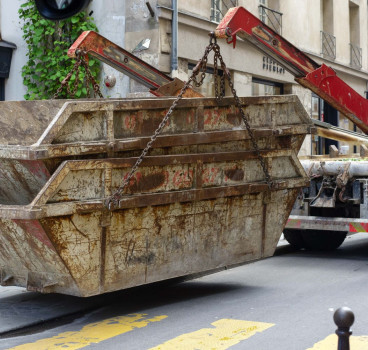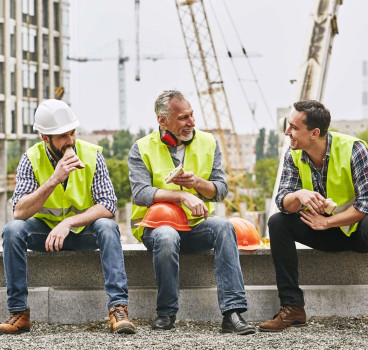The construction industry and indigenous communities
History has shown that the construction industry has had a significant impact on Indigenous communities, both positive and negative. When done responsibly, construction has helped preserve and celebrate Indigenous cultures and traditions, however, when done poorly, it has damaged sacred sites, disrupted traditional ways of life and has contributed to environmental degradation.
Indigenous communities have a deep connection to the land, often rooted in spiritual beliefs and cultural traditions. Sacred sites, places of spiritual significance or cultural importance, are an integral part of this connection. Construction projects, if not carefully planned and executed, can have devastating impacts on these areas, causing irreparable harm to cultural heritage and spiritual well-being.
This can be a problem for modern builders as sacred sites can vary widely in their physical characteristics and cultural significance. Some examples include cemeteries and burial grounds, often considered sacred places of rest for ancestors.
Mountains, rivers, forests and other natural features can also hold spiritual or cultural significance for Indigenous communities. Likewise, places associated with major events or figures in Indigenous history may also be considered sacred. Such sites may serve as gathering places, centres of learning, or are used for spiritual practices.
While specific statistics on the number of sacred sites impacted by construction projects are difficult to obtain, the issue is undoubtedly significant. Many Indigenous communities have faced challenges in protecting their sacred sites from development pressures.
The construction of pipelines and other energy infrastructure projects has often led to conflicts with Indigenous communities over sacred sites. Protests and legal battles have arisen in many parts of the world, highlighting the importance of protecting these culturally significant areas.
Mining operations can also have devastating impact. The destruction of sacred landscapes and the contamination of natural resources can cause significant harm to Indigenous communities.
While there have been some successes in preserving sacred sites, more needs to be done to ensure their protection. Pressure groups are saying that governments and regulatory bodies should implement stronger policies and regulations to protect special areas. These policies should require consultation with Indigenous communities and ensure that sacred sites are identified and protected before construction projects proceed.
Construction companies should also adopt best practices for protecting sacred sites. This includes conducting thorough cultural impact assessments, engaging in meaningful consultation with Indigenous communities, and implementing mitigation measures when necessary.
Local communities have frequently been ignored in the past in the name of progress, but that is beginning to change. To protect sacred sites, it is now essential for construction companies to engage in meaningful consultation with Indigenous communities. This involves seeking input and guidance from community leaders and members throughout the planning and development process.
Consultation helps to identify sacred sites and assess their significance. It also provides an opportunity for Indigenous communities to express their concerns and propose alternative solutions that may minimise or avoid impacts on areas considered to be culturally sensitive.
Mitigation strategies
Experience has shown that if a construction project cannot be avoided, there are several strategies that can be employed to mitigate impacts on sacred sites. In some cases, it may be possible to relocate the project to avoid special areas. This should only be considered as a last resort and should be done in consultation with the affected Indigenous community.
Construction plans can often be modified to avoid or minimise impact. This may involve changing the location of buildings, roads or other infrastructure. To ensure this happens construction projects can be monitored by cultural experts to ensure that sacred sites are not damaged or disturbed.
If a sacred site cannot be avoided, mitigation measures can be implemented to minimise impacts. This may include creating buffer zones, restricting access, or implementing environmental monitoring programmes.
On the more positive side, construction projects can provide economic opportunities for Indigenous communities. By hiring Indigenous businesses and workers, construction companies can contribute to the economic development of these communities.
Supporting Indigenous businesses can also help to preserve cultural traditions and knowledge, as local people often have a deeper understanding of the right materials, construction techniques and environmental practices. By working with Indigenous businesses, construction companies can also learn from traditional knowledge and incorporate it into their projects.
For example, Indigenous communities have developed strategies for managing natural resources sustainably, such as fishing, hunting and gathering. By protecting their sacred sites and natural areas, they have also preserved biodiversity and ecosystem health.
Celebrating indigenous culture
By taking this route, there are other benefits. When you incorporate Indigenous design elements and materials into buildings, construction companies can create spaces that reflect the unique heritage and traditions of local communities.
Traditional patterns, symbols and artwork, can be worked into building facades, interiors and landscaping. Locally sourced, natural materials such as wood, stone and clay to connect the building to the land and its history, are also available. Furthermore, it is possible to incorporate cultural symbols, such as totem poles, animal figures, or celestial bodies into the design of the building.
The Indigenous World Centre in Ottawa, Canada, for example, features a striking cedar-shingled roof, traditional First Nations artwork and a central gathering space inspired by teepees. The Musqueam Cultural Centre in Vancouver, also in Canada, incorporates traditional Musqueam design elements, such as a woven cedar facade and a central courtyard inspired by traditional longhouses.
The National Museum of the American Indian in Washington, D.C., showcases the diverse cultures of Native American and Indigenous peoples through its architecture, exhibits, and programming.
By incorporating Indigenous design elements into construction projects, we create spaces that are not only functional but also meaningful and culturally significant. These projects can help to raise awareness of Indigenous cultures and traditions, and foster a sense of pride and belonging among local communities.
It does seem that we are willing to learn from the past. Profit and progress should no longer override the needs of local people. That said, it is still happening in places such as the Amazon and other large areas of rain forest across the world in spite of protests – we have come a long way – but there is still a long way to go.
Additional Articles

Why everyone has a favourite skip and what it says about you
In construction, there are two universal truths – tea, of course, is essential and believe it or not, everyone - whether they are prepared to admit it - has a favourite skip. It may sound strange,...
Read moreThe cultural significance of the bacon roll in UK construction
Walk onto any construction site in the UK at 7:30am and you’ll quickly discover that the most important piece of equipment isn’t a digger, a drill or a laser level. It’s a humble, foil-wrapped,...
Read more

Check out the odd things unearthed on construction sites
Dig deep enough on a construction site and you might be amazed at what you find. In fact, if there is anywhere destined to uncover hidden treasures, you are in the right place. Large-scale ground...
Read more